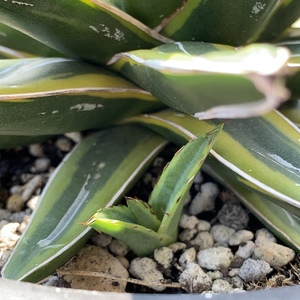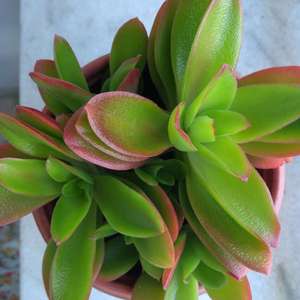成长记
kensong
2019年02月10日

I broke a new leaf that was sprouting but fortunately it still grew though it's deformed. The good news is another new leaf is growing.


2
0
成长记
Lucky Coyote
2018年12月30日

My terrarium seems to be adjusting well, my snaily has some new isopod roomies, and the springtail population is bursting. Hopefully, it keeps on growing well.
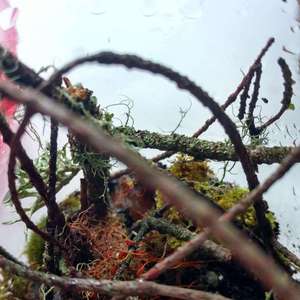
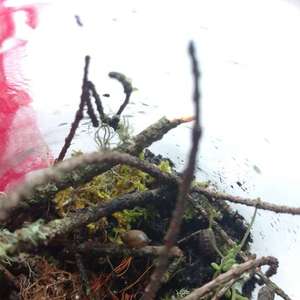


1
0
文章
Andy
2018年12月26日

Facebook Pinterest Twitter Google+ LinkedIn StumbleUponLearn how to grow a tamarind tree in this complete article. Growing tamarind tree is easy, it’s a low care plant with a few requirements.

USDA Zone — 9b to 11
Difficulty — Easy
(adsbygoogle = window.adsbygoogle || []).push({});
Other Names — Tamarindus indica, tamarindo, tamarin, tamarinier, tamarinier des Indes, tamarindier, tamarinde, sampalok, asam jawa, ambli, imli, chinch, ma-kharm.
Tamarind tree is native to Africa and grows like a wild plant in Indian subcontinent. It’s also grown across Southeast Asia, South America and tropical parts of Australia and North America.
Information about Tamarind Tree
Tamarind is a slow-growing tree. It’s able to reach a height of 25 m and a circumference of 7 m, very long-lived, in fact, it can survive for more than 300 years.
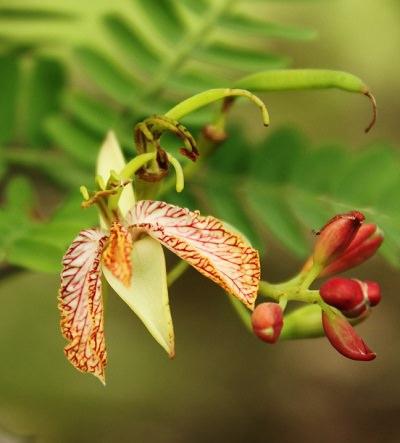

Tamarind leaves are evergreen, like pinnate up to 15 cm long consisting of 10 – 12 pairs of leaflets. Its leaves somewhat looks like acacia leaves. Tamarind flowers are grouped in inflorescence and have five yellow petals with red streaks. Pollination of flowers is entomophilous (pollinated by insects).
(adsbygoogle = window.adsbygoogle || []).push({});
Tamarind fruits are legumes. Slightly curved, 10 to 15 cm long and have a brown color. Its seeds, 4 to 12 in each pod, make up 34% of the legume and are inserted into a yellowish or brown colored pulp that taste very sour and sweet but pleasant and represents most of the fruit.
Compared to other fruits, in tamarind, during the maturation phase the acidity does not decrease, while the hydrolysis of the starch leads to an accumulation of reducing sugar (sucrose).
Tamarind pulp contains 70% carbohydrate, 3% protein and less than 1% fat, it also contains tartaric acid (8-10%), which also occurs in other fruits like bananas and grapes.
Tamarind Tree Varieties
There are different types of tamarind varieties, among which include: Sweet Tamarind, Australian tamarind, Manila tamarind, Velvet tamarind, Spanish Tamarind.
Propagation
Tamarind is propagated by seeds, grafting, cuttings and air layering. Seeds are viable for many months.
How to Grow Tamarind Tree from Seed
Soak tamarind seeds overnight in warm water to speed up germination. Sow seeds 1/2 inches deep in good quality seed starting mix. Germination occurs within one or two week after sowing.
*Plants grown from seeds do not go into production before the 6 – 7 years after germination. So it is better to grow tamarind from cutting or buy a plant from nursery if you want quick results.
Planting Tamarind
Dig a hole twice the size of the root ball of the plant. Gently remove the plant from the pot and cut dead or damaged roots. Insert the root ball in the hole and fill the soil around root ball to maintain the tree trunk above the soil line. Firm the soil and water the plant thoroughly.
For commercial growers, the planting density is large because of well developed foliage and width tamarind tree needs, the spacing should be around 5 – 15 m, depending more on the variety.
Position For Growing Tamarind Tree
Tamarind prefers tropical and subtropical, dry and windy climate. It can adapt even to the warm temperate climate, but there it’ll not be very productive. Young plants can’t withstand the cold, while the adults are resistant to temperature till 28 degree Fahrenheit only.
Best planting position is in full sun. For flowering, fruit setting and fruit development, tamarind tree needs clear sky and drier days.
How to Grow Tamarind Tree in Cold Climate

Tamarind is a tropical tree, it endures mild winter but growing it outside in colder climate is definitely a bad idea. If you want to grow it, grow tamarind tree in pot and keep it indoors or in a greenhouse during winter. You can also make a beautiful bonsai of tamarind tree.
Tamarind Tree Growing RequirementsSun
Tamarind loves full sun and heat.
Soil
Tamarind prefers deep loamy soil. It thrives in neutral, gritty, clay, even saline soil type. Soil should be well drained. For growing tamarind you don’t need to care about soil pH level. It grows in pH level around 4.5 – 9.
Watering
Water saplings deeply when the first inch of soil is dry to the touch. Once established, tamarind trees don’t need watering and can withstand periods of extreme drought conditions without experiencing adverse effects.
Fertilizer
Feed the tamarind plant with organic fertilizer according to the manufacturer’s instructions. Fertilize young trees with 6 – 6 – 3 (N – P – K) fertilizer every 2-3 month during season. Mature trees don’t need fertilizer but can be fertilized occasionally with 8 – 3 – 9 fertilizer to give a boost.
Application of compost and manure should be done too, to reduce the need of fertilizer.
Tamarind Tree CareMulching

Spread 4 or 5 inches thick layer of mulch around tamarind tree at the beginning of each spring. This helps to protect the roots of the tree, prevents weed and keeps the soil moist, mimicking the effects of a natural forest floor.
(adsbygoogle = window.adsbygoogle || []).push({}); Pruning
Prune your tamarind tree regularly to control its growth and maintain its shape. Remove dead and damaged wood from the plant.
Pests and Diseases
Tamarind tree is susceptible to pests like scales, mealy bugs, aphids and fruit borers. In diseases, it’s affected by root rot, sooty mold and leaf spot.
Tamarind Uses (adsbygoogle = window.adsbygoogle || []).push({});
Tamarind fruits are used for fresh consumption and for the preparation of juices, sauces, jams, beverages and syrups. Tamarind pulp is used in preparation of many South Asian cuisines and curry recipes.
Facebook Pinterest Twitter Google+ LinkedIn StumbleUpondiv.OUTBRAIN{padding:30px}


USDA Zone — 9b to 11
Difficulty — Easy
(adsbygoogle = window.adsbygoogle || []).push({});
Other Names — Tamarindus indica, tamarindo, tamarin, tamarinier, tamarinier des Indes, tamarindier, tamarinde, sampalok, asam jawa, ambli, imli, chinch, ma-kharm.
Tamarind tree is native to Africa and grows like a wild plant in Indian subcontinent. It’s also grown across Southeast Asia, South America and tropical parts of Australia and North America.
Information about Tamarind Tree
Tamarind is a slow-growing tree. It’s able to reach a height of 25 m and a circumference of 7 m, very long-lived, in fact, it can survive for more than 300 years.


Tamarind leaves are evergreen, like pinnate up to 15 cm long consisting of 10 – 12 pairs of leaflets. Its leaves somewhat looks like acacia leaves. Tamarind flowers are grouped in inflorescence and have five yellow petals with red streaks. Pollination of flowers is entomophilous (pollinated by insects).
(adsbygoogle = window.adsbygoogle || []).push({});
Tamarind fruits are legumes. Slightly curved, 10 to 15 cm long and have a brown color. Its seeds, 4 to 12 in each pod, make up 34% of the legume and are inserted into a yellowish or brown colored pulp that taste very sour and sweet but pleasant and represents most of the fruit.
Compared to other fruits, in tamarind, during the maturation phase the acidity does not decrease, while the hydrolysis of the starch leads to an accumulation of reducing sugar (sucrose).
Tamarind pulp contains 70% carbohydrate, 3% protein and less than 1% fat, it also contains tartaric acid (8-10%), which also occurs in other fruits like bananas and grapes.
Tamarind Tree Varieties
There are different types of tamarind varieties, among which include: Sweet Tamarind, Australian tamarind, Manila tamarind, Velvet tamarind, Spanish Tamarind.
Propagation
Tamarind is propagated by seeds, grafting, cuttings and air layering. Seeds are viable for many months.
How to Grow Tamarind Tree from Seed
Soak tamarind seeds overnight in warm water to speed up germination. Sow seeds 1/2 inches deep in good quality seed starting mix. Germination occurs within one or two week after sowing.
*Plants grown from seeds do not go into production before the 6 – 7 years after germination. So it is better to grow tamarind from cutting or buy a plant from nursery if you want quick results.
Planting Tamarind
Dig a hole twice the size of the root ball of the plant. Gently remove the plant from the pot and cut dead or damaged roots. Insert the root ball in the hole and fill the soil around root ball to maintain the tree trunk above the soil line. Firm the soil and water the plant thoroughly.
For commercial growers, the planting density is large because of well developed foliage and width tamarind tree needs, the spacing should be around 5 – 15 m, depending more on the variety.
Position For Growing Tamarind Tree
Tamarind prefers tropical and subtropical, dry and windy climate. It can adapt even to the warm temperate climate, but there it’ll not be very productive. Young plants can’t withstand the cold, while the adults are resistant to temperature till 28 degree Fahrenheit only.
Best planting position is in full sun. For flowering, fruit setting and fruit development, tamarind tree needs clear sky and drier days.
How to Grow Tamarind Tree in Cold Climate


Tamarind is a tropical tree, it endures mild winter but growing it outside in colder climate is definitely a bad idea. If you want to grow it, grow tamarind tree in pot and keep it indoors or in a greenhouse during winter. You can also make a beautiful bonsai of tamarind tree.
Tamarind Tree Growing RequirementsSun
Tamarind loves full sun and heat.
Soil
Tamarind prefers deep loamy soil. It thrives in neutral, gritty, clay, even saline soil type. Soil should be well drained. For growing tamarind you don’t need to care about soil pH level. It grows in pH level around 4.5 – 9.
Watering
Water saplings deeply when the first inch of soil is dry to the touch. Once established, tamarind trees don’t need watering and can withstand periods of extreme drought conditions without experiencing adverse effects.
Fertilizer
Feed the tamarind plant with organic fertilizer according to the manufacturer’s instructions. Fertilize young trees with 6 – 6 – 3 (N – P – K) fertilizer every 2-3 month during season. Mature trees don’t need fertilizer but can be fertilized occasionally with 8 – 3 – 9 fertilizer to give a boost.
Application of compost and manure should be done too, to reduce the need of fertilizer.
Tamarind Tree CareMulching


Spread 4 or 5 inches thick layer of mulch around tamarind tree at the beginning of each spring. This helps to protect the roots of the tree, prevents weed and keeps the soil moist, mimicking the effects of a natural forest floor.
(adsbygoogle = window.adsbygoogle || []).push({}); Pruning
Prune your tamarind tree regularly to control its growth and maintain its shape. Remove dead and damaged wood from the plant.
Pests and Diseases
Tamarind tree is susceptible to pests like scales, mealy bugs, aphids and fruit borers. In diseases, it’s affected by root rot, sooty mold and leaf spot.
Tamarind Uses (adsbygoogle = window.adsbygoogle || []).push({});
Tamarind fruits are used for fresh consumption and for the preparation of juices, sauces, jams, beverages and syrups. Tamarind pulp is used in preparation of many South Asian cuisines and curry recipes.
Facebook Pinterest Twitter Google+ LinkedIn StumbleUpondiv.OUTBRAIN{padding:30px}
0
0
文章
Andy
2018年12月26日

Facebook Pinterest Twitter Google+ LinkedIn StumbleUponLearn how to grow cloves in this clove cultivation guide. Growing cloves is similar to other tropical spices and requires hot and humid climate.
USDA Zones— 9b – 12
Difficulty— Moderate to Hard
(adsbygoogle = window.adsbygoogle || []).push({});
Family— Myrtaceae
Other Names— Syzygium aromaticum (Scientific name), Bourgeon Floral de Clou de Girofle, Bouton Floral de Clou de Girofle, Caryophylli Flos, Caryophyllum, Caryophyllus aromaticus, Clavo de Olor, Clous de Girolfe, Clove Flower, Clove Flowerbud, Clove Leaf, Clove Oil, Clove Stem, Cloves, Cloves Bud, Ding Xiang, Eugenia aromatica, Eugenia caryophyllata, Eugenia caryophyllus, Feuille de Clou de Girofle, Fleur de Clou de Girofle, Flores Caryophylli, Flores Caryophyllum, Gewurznelken Nagelein, Girofle, Giroflier, Huile de Clou de Girofle, Kreteks, Laung, Lavang, Lavanga, Oil of Clove, Syzygium aromaticum, Tige de Clou de Girofle.
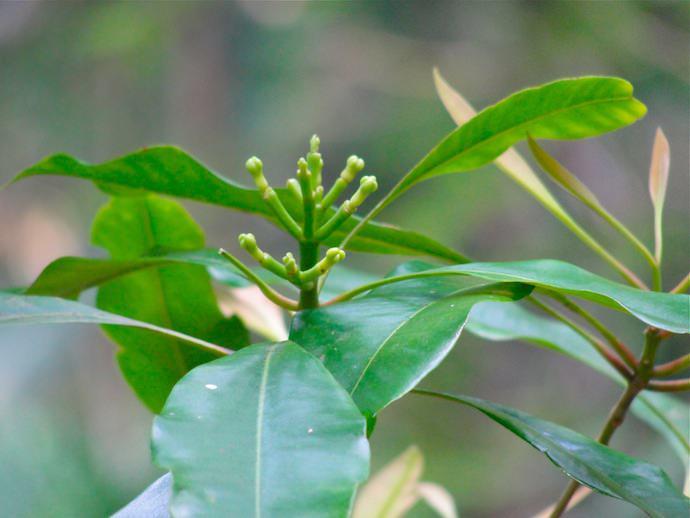

It is an evergreen tree, and in favorable climates, it grows up to more than 8 meters high, while the cultivated varieties are of a smaller height of around 5 meters. Clove tree trunk has smooth bark with grayish yellow aromatic foliage. It is a slow growing but a long-lived tree and can exceed 100 years of age easily.
(adsbygoogle = window.adsbygoogle || []).push({}); How to Grow ClovesClove Cultivation
Growing cloves require humid tropical or subtropical climate. Constant temperature above 50 F (10 C) is essential, the optimum temperature for growing clove tree is around 70 – 85 F (20 – 30 C). You can not grow it outdoors in temperate zones. However, growing clove tree in a pot is also possible with proper care in winters.
Propagation
Growing cloves from seeds and cuttings is possible. For seed propagation, buy seeds that are recently harvested and not dried out completely as wholly dried out seeds are not viable and do not germinate.
Plant seeds as soon as you get them. The seeds don’t need to be covered with soil and should be placed on top of the soil. You can cover the pot or seed tray with the plastic sheet to increase the humidity.
Requirements for Growing Cloves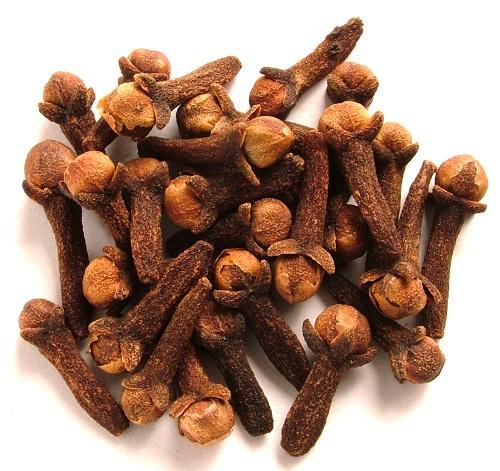

Position
For healthy and strong growth, it needs a tropical climate. The Clove prefers a semi-shaded exposure similar to black pepper. It can not withstand winter temperatures below 32 F (0 C). So do not plant it outside in an area with cold and harsh winters. However, it can tolerate occasional frosts.
Soil
Soil should be rich and loamy with good drainage and lot of organic matter.
Water
Clove tree grows in wet tropics. It requires regular watering especially when the plant is young (first 3-4 years). Overwatering must be avoided.
Fertilizer
Apply 50 kg aged manure or compost and bone meal or fish meal 2-4 kg per year. Usually, the organic fertilizer is applied at the beginning of rainy season in the regions where clove is cultivated. Once the plant starts to grow, apply 40-gram urea, 110-gram superphosphate, and 80-gram MOP, instead of MOP you can also use potassium sulfate. The dosage must be increased and for the tree that is mature and older than 15 years, apply 600 gm urea, 1560 gm superphosphate and 1250 gm MOP per year. The fertilizer must be applied in equal split doses in shallow trenches dug around the plant after the end of summer.
Pests and Diseases
In diseases, it suffers from seedling wilt, leaf rot, leaf spot and bud shedding. Stem borer, scales, and mealybugs are the pests that attack it.
Harvesting
The cloves you use as a spice is actually the result of the harvest of dried, unopened flower buds. A Clove tree starts to flower after 6 years of its planting if grown in favorable conditions. However, it takes at least 15 – 20 years reach the full bearing stage.
Because opened flowers are not valued as a spice, the unopened buds are picked before they turn pink and when they are rounded and plump. At that time, they are less than 2 cm long. Harvesting must be done carefully without damaging the branches.
The buds once picked are dried in the sun or the hot air chambers until they have lost two-thirds of their original weight and the color of the bud stem has darkened to dark brown and rest of the bud in slight brown color.
Properties and Benefits of ClovesClove is used in the ancient Chinese medicines and traditional Ayurvedic medicines for its antiseptic and anti-fermentation properties.Clove is used as a disinfectant in the oral cavity and teeth. The action of clove covers micro-organisms, including viruses, bacteria, and fungi. It also has analgesic or anesthetic properties.Additionally, it treats digestive disorders such as diarrhea, abdominal pain of spastic origin, bloating and dyspepsia. Since it is an antiseptic, it can also be used in a sore throat.Other Clove Uses (adsbygoogle = window.adsbygoogle || []).push({});
The essential oil is widely used for its aroma and the preparation of toothpaste, soaps, detergents, creams, perfumes, and mouthwashes due to its antiseptic properties. Also, because of its aromatic and preservative properties, it is used in alcoholic beverages, soft drinks as well as a condiment for meat, delicious cuisines and various sauces. In Indonesia, it is used in the preparation of Indonesian cigarettes which is made from the mixture of tobacco, cloves, and mint.
Facebook Pinterest Twitter Google+ LinkedIn StumbleUpondiv.OUTBRAIN{padding:30px}
USDA Zones— 9b – 12
Difficulty— Moderate to Hard
(adsbygoogle = window.adsbygoogle || []).push({});
Family— Myrtaceae
Other Names— Syzygium aromaticum (Scientific name), Bourgeon Floral de Clou de Girofle, Bouton Floral de Clou de Girofle, Caryophylli Flos, Caryophyllum, Caryophyllus aromaticus, Clavo de Olor, Clous de Girolfe, Clove Flower, Clove Flowerbud, Clove Leaf, Clove Oil, Clove Stem, Cloves, Cloves Bud, Ding Xiang, Eugenia aromatica, Eugenia caryophyllata, Eugenia caryophyllus, Feuille de Clou de Girofle, Fleur de Clou de Girofle, Flores Caryophylli, Flores Caryophyllum, Gewurznelken Nagelein, Girofle, Giroflier, Huile de Clou de Girofle, Kreteks, Laung, Lavang, Lavanga, Oil of Clove, Syzygium aromaticum, Tige de Clou de Girofle.


It is an evergreen tree, and in favorable climates, it grows up to more than 8 meters high, while the cultivated varieties are of a smaller height of around 5 meters. Clove tree trunk has smooth bark with grayish yellow aromatic foliage. It is a slow growing but a long-lived tree and can exceed 100 years of age easily.
(adsbygoogle = window.adsbygoogle || []).push({}); How to Grow ClovesClove Cultivation
Growing cloves require humid tropical or subtropical climate. Constant temperature above 50 F (10 C) is essential, the optimum temperature for growing clove tree is around 70 – 85 F (20 – 30 C). You can not grow it outdoors in temperate zones. However, growing clove tree in a pot is also possible with proper care in winters.
Propagation
Growing cloves from seeds and cuttings is possible. For seed propagation, buy seeds that are recently harvested and not dried out completely as wholly dried out seeds are not viable and do not germinate.
Plant seeds as soon as you get them. The seeds don’t need to be covered with soil and should be placed on top of the soil. You can cover the pot or seed tray with the plastic sheet to increase the humidity.
Requirements for Growing Cloves


Position
For healthy and strong growth, it needs a tropical climate. The Clove prefers a semi-shaded exposure similar to black pepper. It can not withstand winter temperatures below 32 F (0 C). So do not plant it outside in an area with cold and harsh winters. However, it can tolerate occasional frosts.
Soil
Soil should be rich and loamy with good drainage and lot of organic matter.
Water
Clove tree grows in wet tropics. It requires regular watering especially when the plant is young (first 3-4 years). Overwatering must be avoided.
Fertilizer
Apply 50 kg aged manure or compost and bone meal or fish meal 2-4 kg per year. Usually, the organic fertilizer is applied at the beginning of rainy season in the regions where clove is cultivated. Once the plant starts to grow, apply 40-gram urea, 110-gram superphosphate, and 80-gram MOP, instead of MOP you can also use potassium sulfate. The dosage must be increased and for the tree that is mature and older than 15 years, apply 600 gm urea, 1560 gm superphosphate and 1250 gm MOP per year. The fertilizer must be applied in equal split doses in shallow trenches dug around the plant after the end of summer.
Pests and Diseases
In diseases, it suffers from seedling wilt, leaf rot, leaf spot and bud shedding. Stem borer, scales, and mealybugs are the pests that attack it.
Harvesting
The cloves you use as a spice is actually the result of the harvest of dried, unopened flower buds. A Clove tree starts to flower after 6 years of its planting if grown in favorable conditions. However, it takes at least 15 – 20 years reach the full bearing stage.
Because opened flowers are not valued as a spice, the unopened buds are picked before they turn pink and when they are rounded and plump. At that time, they are less than 2 cm long. Harvesting must be done carefully without damaging the branches.
The buds once picked are dried in the sun or the hot air chambers until they have lost two-thirds of their original weight and the color of the bud stem has darkened to dark brown and rest of the bud in slight brown color.
Properties and Benefits of ClovesClove is used in the ancient Chinese medicines and traditional Ayurvedic medicines for its antiseptic and anti-fermentation properties.Clove is used as a disinfectant in the oral cavity and teeth. The action of clove covers micro-organisms, including viruses, bacteria, and fungi. It also has analgesic or anesthetic properties.Additionally, it treats digestive disorders such as diarrhea, abdominal pain of spastic origin, bloating and dyspepsia. Since it is an antiseptic, it can also be used in a sore throat.Other Clove Uses (adsbygoogle = window.adsbygoogle || []).push({});
The essential oil is widely used for its aroma and the preparation of toothpaste, soaps, detergents, creams, perfumes, and mouthwashes due to its antiseptic properties. Also, because of its aromatic and preservative properties, it is used in alcoholic beverages, soft drinks as well as a condiment for meat, delicious cuisines and various sauces. In Indonesia, it is used in the preparation of Indonesian cigarettes which is made from the mixture of tobacco, cloves, and mint.
Facebook Pinterest Twitter Google+ LinkedIn StumbleUpondiv.OUTBRAIN{padding:30px}
0
0
文章
Andy
2018年12月26日

Facebook Pinterest Twitter Google+ WhatsApp StumbleUponTurmeric is a superfood and has many medicinal benefits. Growing turmeric in pots is not so difficult if you follow this how-to guide.


USDA Zones— 7b – 11, below these zones grow it from spring to fall
(adsbygoogle = window.adsbygoogle || []).push({});
Difficulty— Easy to Moderate
Other Names— Curcuma, Curcuma aromatica, Curcuma domestica, Curcumae longa, Curcumae Longae Rhizoma, Curcumin, Curcumine, Curcuminoid, Curcuminoïde, Curcuminoïdes, Curcuminoids, Halada, Haldi, Haridra, Indian Saffron, Nisha, Pian Jiang Huang, Racine de Curcuma, Radix Curcumae, Rajani, Rhizoma Cucurmae Longae, Safran Bourbon, Safran de Batallita, Safran des Indes, Turmeric Root, Yu Jin.
Soil pH— Slightly acidic to slightly alkaline soil
Turmeric (Curcuma longa) is obtained from the underground tubers or rhizomes. Originated in India, it is now cultivated throughout the tropical Asia and in smaller extent in other subtropical and tropical parts of the world.
(adsbygoogle = window.adsbygoogle || []).push({}); Turmeric plants look good too, you can grow them outdoors to get a tropical look in your garden.

Where to Find the Rhizome or Turmeric Plant
As you may already know, turmeric grows from the rhizomes like ginger. The easiest way to find them is to search for fresh turmeric rhizome in organic food stores. Also, try searching for it in the local garden center or seed store. Alternatively, you can find a turmeric plant or rhizome online.
Choosing a Pot
For growing turmeric in pots, choose a large pot as this amazing herb can easily exceed the height of 1 m. Pot should be at least 12 inches deep and 12-18 inches wide so that the plant can spread its tubers freely. Plant 1 or 2 rhizomes in such a pot.
Planting Turmeric
The best season to plant turmeric is spring or summer when the temperature starts to stay above 54 F (12 C), but if you are living in tropics, it can be planted throughout the year.
After you have got the rhizome follow the steps below for planting:
Break large rhizome into small pieces, each one should have at least two or three buds.Fill a pot with rich organic soil that is moist and well-drained.Place it about 2 inches (5 cm) below the soil surface, with the buds facing up.Water the pot thoroughly.Requirements for Growing Turmeric in Containers
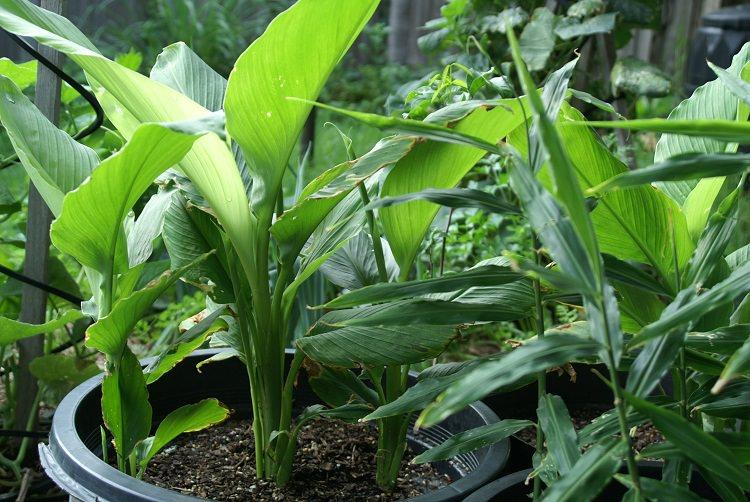

Growing turmeric is similar to ginger, it requires warm and humid climate to thrive. If you live in a cool temperate climate or if you’re short of space and want to grow your own turmeric rhizomes then learn how to grow turmeric in pots.
Position
The position must be sheltered from the wind. In tropics, the plant is grown in dappled shade and does not like all day long intense direct sun, considering this keep the turmeric plant in partial sun in the warmer zones (USDA Zone 9 and above). However, in temperate climates, provide it full sun for optimum growth, some shade in the afternoon would be okay.
Soil
Plant turmeric in a light and loamy soil that is rich in organic matters. Use well-drained soil otherwise the plant will suffer.
Water
Watering requirements are similar to ginger. Keep the soil moist throughout the growing season from spring to fall and do not hesitate to mist the foliage in dry weather to increase the humidity level around the plant.
If growing turmeric in a warmer region, keep watering the plant to maintain moist soil in winters too.
Temperature
The ideal temperature range for growing turmeric is between 68-95 F (20-35 C). When the temperature drop below 50 F (10 C) the plant suffers.
Turmeric Plant Care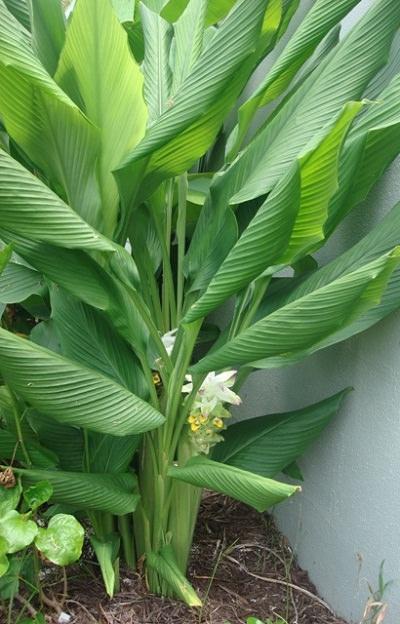

Overwintering
Since you are growing turmeric in a pot, move the plant inside even in low-light conditions. Because you have to only overwinter the roots. It is important that when you grow turmeric indoors maintain a constant ambient temperature of approximately 64 F (18 C).
Overwintering turmeric on ground
If you’re growing turmeric in true tropical climate then you don’t need to care about winter. But in warm temperate zones (below USDA Zones 9b and down to 7) to overwinter your turmeric plants, reduce watering around the end of fall and when the leaves begin to wilt and turn yellow due to temperature drop cut the plant back to the ground so that it can hibernate. It will perk up again in the spring.
If you want to grow turmeric in cooler areas (below zone 7) then you have to dig up the rhizomes to save them from freezing. For this, dig up the rhizomes and rinse off excess soil from them, snap off rotting pieces. Air dry them and store in a cool and dry place until spring.
Fertilizer
Fertilize turmeric every month with an all-purpose liquid fertilizer during the growing season. Application of manure or compost also helps.
Pruning
The turmeric plant should not be pruned. It is sufficient if you remove dried leaves time to time.
Pests and Diseases
Turmeric plant is not prone to any serious disease or pests. However, red spider mites and scales can become a problem. In diseases, it only suffers from rhizome rot and leaf spot. Rot appears when the plant is grown in waterlogged soil. Therefore, it is important to grow turmeric in well-drained soil.
Harvesting
Turmeric plant takes 8 to 10 months to mature. Harvesting is done once the leaves become yellow and stems start to dry. Harvesting turmeric is not difficult, simply dig up the plant entirely, including the roots.
(adsbygoogle = window.adsbygoogle || []).push({});
Cut the required amount and then replant the remaining part again to get a new plant growing.
After you cut the rhizome, follow the steps below to process it:
Boil the rhizomes.Carefully remove the skin from rhizomes.Place the bare rhizomes in a tray.Dry them by exposing to sunlight.
When the rhizomes are dry, grind them and store your homemade organic fresh turmeric powder in an air tight container.
Turmeric Uses and Benefits
Turmeric powder has many medicinal properties that have long been known in the India and China. Turmeric is termed as ‘Super Food‘ probably the most powerful natural anti-inflammatory and antioxidant. It is used as an anti-depressant and plays a protective role against Alzheimer’s disease and against different types of cancers. Turmeric powder is the most prominent ingredient in almost all kind of curry recipes, a pinch of it is used to provide pretty orange color. Its leaves are also useful. Young shoots and flowers are used in Thai cuisines while the leaves are used to flavor the fish in Indonesia.
One thing you did not know and surprise you is the addition of pepper in a diet as it contains piperine helps in the absorption of turmeric. Especially the black pepper, it can tenfold the benefits of this superfood.
Pin it (adsbygoogle = window.adsbygoogle || []).push({});


Facebook Pinterest Twitter Google+ WhatsApp StumbleUpondiv.OUTBRAIN{padding:30px}


USDA Zones— 7b – 11, below these zones grow it from spring to fall
(adsbygoogle = window.adsbygoogle || []).push({});
Difficulty— Easy to Moderate
Other Names— Curcuma, Curcuma aromatica, Curcuma domestica, Curcumae longa, Curcumae Longae Rhizoma, Curcumin, Curcumine, Curcuminoid, Curcuminoïde, Curcuminoïdes, Curcuminoids, Halada, Haldi, Haridra, Indian Saffron, Nisha, Pian Jiang Huang, Racine de Curcuma, Radix Curcumae, Rajani, Rhizoma Cucurmae Longae, Safran Bourbon, Safran de Batallita, Safran des Indes, Turmeric Root, Yu Jin.
Soil pH— Slightly acidic to slightly alkaline soil
Turmeric (Curcuma longa) is obtained from the underground tubers or rhizomes. Originated in India, it is now cultivated throughout the tropical Asia and in smaller extent in other subtropical and tropical parts of the world.
(adsbygoogle = window.adsbygoogle || []).push({}); Turmeric plants look good too, you can grow them outdoors to get a tropical look in your garden.


Where to Find the Rhizome or Turmeric Plant
As you may already know, turmeric grows from the rhizomes like ginger. The easiest way to find them is to search for fresh turmeric rhizome in organic food stores. Also, try searching for it in the local garden center or seed store. Alternatively, you can find a turmeric plant or rhizome online.
Choosing a Pot
For growing turmeric in pots, choose a large pot as this amazing herb can easily exceed the height of 1 m. Pot should be at least 12 inches deep and 12-18 inches wide so that the plant can spread its tubers freely. Plant 1 or 2 rhizomes in such a pot.
Planting Turmeric
The best season to plant turmeric is spring or summer when the temperature starts to stay above 54 F (12 C), but if you are living in tropics, it can be planted throughout the year.
After you have got the rhizome follow the steps below for planting:
Break large rhizome into small pieces, each one should have at least two or three buds.Fill a pot with rich organic soil that is moist and well-drained.Place it about 2 inches (5 cm) below the soil surface, with the buds facing up.Water the pot thoroughly.Requirements for Growing Turmeric in Containers


Growing turmeric is similar to ginger, it requires warm and humid climate to thrive. If you live in a cool temperate climate or if you’re short of space and want to grow your own turmeric rhizomes then learn how to grow turmeric in pots.
Position
The position must be sheltered from the wind. In tropics, the plant is grown in dappled shade and does not like all day long intense direct sun, considering this keep the turmeric plant in partial sun in the warmer zones (USDA Zone 9 and above). However, in temperate climates, provide it full sun for optimum growth, some shade in the afternoon would be okay.
Soil
Plant turmeric in a light and loamy soil that is rich in organic matters. Use well-drained soil otherwise the plant will suffer.
Water
Watering requirements are similar to ginger. Keep the soil moist throughout the growing season from spring to fall and do not hesitate to mist the foliage in dry weather to increase the humidity level around the plant.
If growing turmeric in a warmer region, keep watering the plant to maintain moist soil in winters too.
Temperature
The ideal temperature range for growing turmeric is between 68-95 F (20-35 C). When the temperature drop below 50 F (10 C) the plant suffers.
Turmeric Plant Care


Overwintering
Since you are growing turmeric in a pot, move the plant inside even in low-light conditions. Because you have to only overwinter the roots. It is important that when you grow turmeric indoors maintain a constant ambient temperature of approximately 64 F (18 C).
Overwintering turmeric on ground
If you’re growing turmeric in true tropical climate then you don’t need to care about winter. But in warm temperate zones (below USDA Zones 9b and down to 7) to overwinter your turmeric plants, reduce watering around the end of fall and when the leaves begin to wilt and turn yellow due to temperature drop cut the plant back to the ground so that it can hibernate. It will perk up again in the spring.
If you want to grow turmeric in cooler areas (below zone 7) then you have to dig up the rhizomes to save them from freezing. For this, dig up the rhizomes and rinse off excess soil from them, snap off rotting pieces. Air dry them and store in a cool and dry place until spring.
Fertilizer
Fertilize turmeric every month with an all-purpose liquid fertilizer during the growing season. Application of manure or compost also helps.
Pruning
The turmeric plant should not be pruned. It is sufficient if you remove dried leaves time to time.
Pests and Diseases
Turmeric plant is not prone to any serious disease or pests. However, red spider mites and scales can become a problem. In diseases, it only suffers from rhizome rot and leaf spot. Rot appears when the plant is grown in waterlogged soil. Therefore, it is important to grow turmeric in well-drained soil.
Harvesting
Turmeric plant takes 8 to 10 months to mature. Harvesting is done once the leaves become yellow and stems start to dry. Harvesting turmeric is not difficult, simply dig up the plant entirely, including the roots.
(adsbygoogle = window.adsbygoogle || []).push({});
Cut the required amount and then replant the remaining part again to get a new plant growing.
After you cut the rhizome, follow the steps below to process it:
Boil the rhizomes.Carefully remove the skin from rhizomes.Place the bare rhizomes in a tray.Dry them by exposing to sunlight.
When the rhizomes are dry, grind them and store your homemade organic fresh turmeric powder in an air tight container.
Turmeric Uses and Benefits
Turmeric powder has many medicinal properties that have long been known in the India and China. Turmeric is termed as ‘Super Food‘ probably the most powerful natural anti-inflammatory and antioxidant. It is used as an anti-depressant and plays a protective role against Alzheimer’s disease and against different types of cancers. Turmeric powder is the most prominent ingredient in almost all kind of curry recipes, a pinch of it is used to provide pretty orange color. Its leaves are also useful. Young shoots and flowers are used in Thai cuisines while the leaves are used to flavor the fish in Indonesia.
One thing you did not know and surprise you is the addition of pepper in a diet as it contains piperine helps in the absorption of turmeric. Especially the black pepper, it can tenfold the benefits of this superfood.
Pin it (adsbygoogle = window.adsbygoogle || []).push({});


Facebook Pinterest Twitter Google+ WhatsApp StumbleUpondiv.OUTBRAIN{padding:30px}
0
0
文章
Andy
2018年12月26日

Facebook Pinterest Twitter Google+ LinkedIn StumbleUponLearn how to grow mamoncillo, read this informative guide on growing mamoncillo to know more about this tropical fruit.
Mamoncillo is a fruit grows on an erect tall growing mamoncillo tree. Growing mamoncillo in a small patio or garden is not possible, you need a lot of space to grow this fruit tree.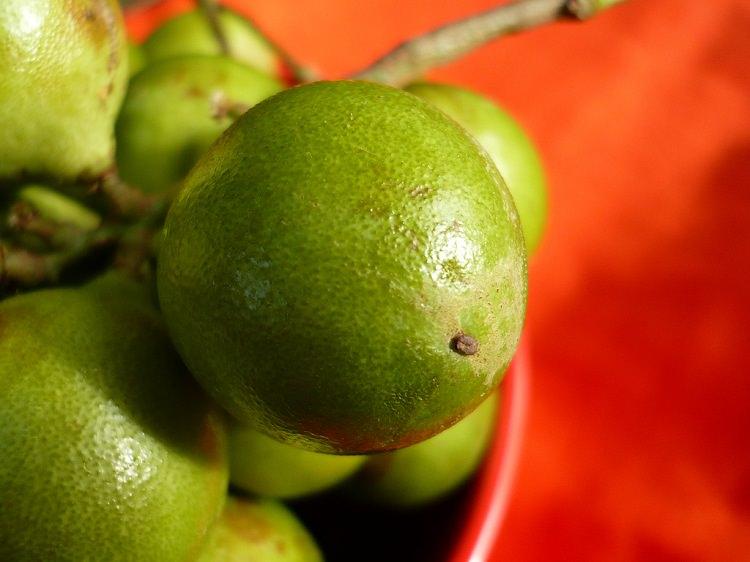

Family — Sapindaceae
(adsbygoogle = window.adsbygoogle || []).push({});
Genus — Melicoccus
USDA Hardiness Zones — 10, 11
Propagation Method — Cuttings, seed
Difficulty — Moderate
(adsbygoogle = window.adsbygoogle || []).push({});
Other Names — Melicoccus bijugatus, chenette, quenette, gnep, guinep, guaya, quenepa, kenip, genip, ginnip, kenepa, knippa, Spanish lime, limoncillo
About Mamoncillo
Also called as Spanish lime, mamoncillo resembles small lime sold in clusters, it doesn’t belong to citrus family and is more like indehiscent fruit (fruit that has hard outer and tough to open). It tastes between lychee to lime. It grows up to 25 m. (85 f.) tall and spread vigorously.
The fruit looks like small unripe mango and it resembles the texture of boiled egg. Hard covering from outside and soft pulpy fruit inside and seed in center.
Growing Conditions
Mamoncillo grows in subtropical climate. It is drought tolerant but serious damage inflict if exposed in frost. It can’t bear the temperature below 25 F (-4 C).
RequirementsSun
Mamoncillo is a tropical tree and like other tropical plants and trees, it loves full sun.
Soil
It can be grown in variety of soil type, poor to rich and sandy but soil should be well drained.
Water
Adult memoncillo trees are drought tolerant, though young plant (less than 4 years) require regular watering while establishing.
Growing Mamoncillo
Instead of growing it from seeds, you should buy a plant from nursery because mamoncillo grown from seeds takes 8-10 years to fruit and even that only after grafting. Buy a healthy plant and plant it on a dry sunny spot of your garden, which is clear from other trees.
CareFertilizer
Fertilizer young mamoncillo plant (below 4 years) with complete fertilizer every other month. Twice in a year apply farm manure around the it. Once the mamoncillo tree becomes mature and starts fruit production, apply phosphorous and potassium rich fertilizer.
Harvest
After 4-5 years of growing (if grown from cuttings) mamoncillo starts to fruit. If you grow it from seeds it takes long time up to 8 years to fruit. When fruit’s shell becomes brittle and easily breakable then it is the time to harvest fruits.
Pests and Diseases (adsbygoogle = window.adsbygoogle || []).push({});
Fruit flies, leaf spot and green scurf are the common pests and diseases that infect it.
Facebook Pinterest Twitter Google+ LinkedIn StumbleUpondiv.OUTBRAIN{padding:30px}
Mamoncillo is a fruit grows on an erect tall growing mamoncillo tree. Growing mamoncillo in a small patio or garden is not possible, you need a lot of space to grow this fruit tree.


Family — Sapindaceae
(adsbygoogle = window.adsbygoogle || []).push({});
Genus — Melicoccus
USDA Hardiness Zones — 10, 11
Propagation Method — Cuttings, seed
Difficulty — Moderate
(adsbygoogle = window.adsbygoogle || []).push({});
Other Names — Melicoccus bijugatus, chenette, quenette, gnep, guinep, guaya, quenepa, kenip, genip, ginnip, kenepa, knippa, Spanish lime, limoncillo
About Mamoncillo
Also called as Spanish lime, mamoncillo resembles small lime sold in clusters, it doesn’t belong to citrus family and is more like indehiscent fruit (fruit that has hard outer and tough to open). It tastes between lychee to lime. It grows up to 25 m. (85 f.) tall and spread vigorously.
The fruit looks like small unripe mango and it resembles the texture of boiled egg. Hard covering from outside and soft pulpy fruit inside and seed in center.
Growing Conditions
Mamoncillo grows in subtropical climate. It is drought tolerant but serious damage inflict if exposed in frost. It can’t bear the temperature below 25 F (-4 C).
RequirementsSun
Mamoncillo is a tropical tree and like other tropical plants and trees, it loves full sun.
Soil
It can be grown in variety of soil type, poor to rich and sandy but soil should be well drained.
Water
Adult memoncillo trees are drought tolerant, though young plant (less than 4 years) require regular watering while establishing.
Growing Mamoncillo
Instead of growing it from seeds, you should buy a plant from nursery because mamoncillo grown from seeds takes 8-10 years to fruit and even that only after grafting. Buy a healthy plant and plant it on a dry sunny spot of your garden, which is clear from other trees.
CareFertilizer
Fertilizer young mamoncillo plant (below 4 years) with complete fertilizer every other month. Twice in a year apply farm manure around the it. Once the mamoncillo tree becomes mature and starts fruit production, apply phosphorous and potassium rich fertilizer.
Harvest
After 4-5 years of growing (if grown from cuttings) mamoncillo starts to fruit. If you grow it from seeds it takes long time up to 8 years to fruit. When fruit’s shell becomes brittle and easily breakable then it is the time to harvest fruits.
Pests and Diseases (adsbygoogle = window.adsbygoogle || []).push({});
Fruit flies, leaf spot and green scurf are the common pests and diseases that infect it.
Facebook Pinterest Twitter Google+ LinkedIn StumbleUpondiv.OUTBRAIN{padding:30px}
0
0
文章
Andy
2018年12月26日

Facebook Pinterest Twitter Google+ LinkedIn StumbleUponLearn how to grow pomegranate tree. Growing Pomegranates in Containers is not difficult, and it is more cold hardy and easy to grow than other tropical fruits.
Pomegranate is one of the nicest fruit trees and perhaps the easiest to grow in pots because it has a shallow root system when compared to other fruit trees.
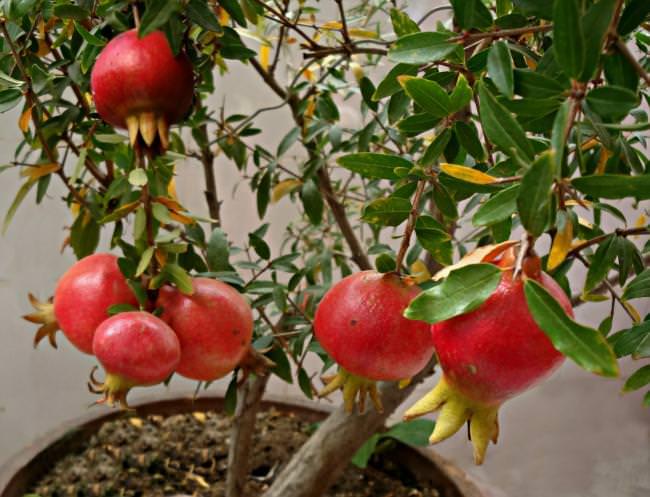

Pomegranate tree if grown under optimal conditions, live up to 200 years. It is native to the Middle East (Iran) and South Asia, Himalayan Northern India. It is a shrub or small tree that might grow up to 6 m (20 ft) but usually reduced to 2 m.
USDA Hardiness Zones: 9b – 11, *can be grown below zone 9 in containers
Difficulty: Easy
Soil pH: Neutral
(adsbygoogle = window.adsbygoogle || []).push({});
Other Names: Punic apple, Granatapfel, Granada, Grenade, Melograno, Melagrana, Anardana, Anar, Dadima, Fruit du, Pomme Grenade, Punica granatum, Roma, Shi Liu Gen Pi, and Shi Liu Pi
Appearance
The exotic container plant is adorned with five to eight centimeters long lance-shaped leaves that are shiny and bronze in color from the bud, which later turn green.
Pomegranate flowers are delicate, bell-shaped and show up in the wild bright red. Its flowers are up to 3 centimeters wide. Ornamental varieties can have flowers in pink, cream, and even white.
In addition to the decorative foliage and flowers, it is mainly the fruits that make the pomegranate tree so desirable. They are of the size of apples with a yellow-brown to a reddish-brown or pink or rich red hard shell. Inside, the fruit consists of countless tiny sacs that are transparent in color. They are juicy and have beautiful pink or red pulp and one hard seed in each, which is completely edible. Overall, the taste of pomegranate fruit is a sweet and juicy, and crunchy and little tart. Without a doubt, this is the best tasting fruit full of nutrients.
Also Read: How to Grow Indian Gooseberry ‘Amla Tree’
Dwarf Pomegranate VarietiesFruiting Varieties‘Nana’ – The most interesting variety among the pomegranates trees is the dwarf variety ‘Nana.’ It grows compact, floriferous and is considered robust and cold hardy. It grows in USDA Zones 7 to 11. As a container plant, it grows up to only about 1 m tall, forms orange to garnet red flowers that produce small fruits with viable seeds.‘Provence’ – When most of the pomegranate varieties are not much cold hardy, Provence is one you can look at. It can tolerate temperature down to 5 F (-15 C) and can be grown in cold climate.‘State fair’ – State fair is manageable variety for containers. It can get up to 1.5 m tall and grown in USDA Zones 7 to 11.Ornamental Varieties‘Flore Pleno’ – It’s a fruitless variety of pomegranate, the name translates as “double flower.” In summer, it produces countless beautiful orange-red flowers.Punica granatum ‘Madame Legrelle’ – A well-known ornamental variety. The special thing about this variety of pomegranate is its extraordinary, dense double flowers that come in shiny orange to salmon colors with a white border.
Note: Pomegranate is a manageable plant. You can also try large varieties.
Propagation and Growing Pomegranates in Containers
Pomegranate plants can be propagated by cuttings or by seeds in spring to summer when the temperature remains in the range of 68 F (20 C), but it is better to buy a 2-3 years old plant from nursery or online. This way you don’t have to wait long for fruits.
Propagation by Seeds
Buy as ripe pomegranate as possible. Separate and clean seeds from the pulp by rubbing them from paper towel, let them dry up for a few days before sowing.
Plant the seeds no more than ¼ inches deep in light seed-starting mix. Place the pots in a bright location, optionally inside a plastic bag or greenhouse that maintains a temperature around 68 F (20 C). Always keep the soil moist. Seeds will germinate within 1 – 6 weeks depending more on the variety and climate.
Propagation by Cuttings
Take several 8 to 10 inch-long cuttings. Plant the cutting in a well-drained potting mix. It roots easily and quickly at the ambient temperature of 20 degrees Celsius and high humidity.
*If you’re living in tropics, growing pomegranates is extremely easy for you. You can grow pomegranate in any season except peak summer. All other growing requirements given below are similar.
Choosing a pot
Pot should be appropriate to the size of the plant, increase the pot size by repotting as your plant grow. Also, care about to have sufficient holes in the base of pot you’re using for proper drainage.
Requirements for Growing Pomegranates in Pots

If you’ve grown citrus in a pot, growing pomegranates in a pot cannot be difficult for you. Moreover, pomegranate is more cold hardy and easy to grow. It requires a lot of water and fertilizer. It is also frost sensitive, but after all of this care, it rewards you with iron-rich, fresh juicy fruits.
Location
Choose the sunniest location to keep your pomegranate plant happy and healthy. The more sun it will receive, the more it will fruit. However, it also thrives in partial shade, but it makes the plant to bloom and fruit lesser. It is also possible to cultivate pomegranate tree near a windowsill if it receives full sun.
Soil
Soil should be loamy, rich in organic content, loose and permeable.
Watering
In the growing period, its water requirement is medium to high. Therefore, it should be watered regularly and deeply. Soil must be kept moist but not wet or waterlogged.
In the winter watering should be reduced.Pomegranate Tree CareFertilizer
During the growing season, the pomegranate tree is fertilized regularly. Fertilize after every two-three weeks using liquid 8-8-8 fertilizer according to the manufacturer’s instructions.
Pomegranate tree in pot often becomes zinc deficient, which is indicated by yellowing leaves. To overcome this, you can spray diluted zinc solution on foliage.
Application of compost or manure is also beneficial. Take care not to overfertilize it with nitrogen-rich fertilizer as it can cause the tree to produce lots of foliage and comparatively fewer flowers.
Overwintering Pomegranate
Overwintering pomegranate is similar to citrus. It is a deciduous tree that worships the sun. Most of its species are sensitive to frost. But for too low temperatures, the plant has developed a protective mechanism.
It sheds its leaves and become dormant below freezing temperature. There are only a few pomegranate tree varieties that survive really freezing temperatures with more than -10 C without damage.
If the pomegranate is cultivated in a pot in a cold climate below USDA Zone 9, it is important to prune it in the fall. The best place to keep pomegranate plant in winter is the garage or basement that remains warm. Temperature while keeping it indoors should not fall below 37 F (3 C). However, the optimum low temperature for most of the pomegranate varieties is 7 C (45 F).
If you’re able to keep your pomegranate tree in temperature around 55 F (15 C) indoors and allow it to take at least 4 hours of sunlight, it will not shed its leaves and go dormant. During the period of dormancy, the pomegranate hardly needs fertilizer or water. However, the plant in winter should not dry out completely.
In spring, bring back the plant to a warm and bright place so that it’ll gradually acclimate the climate. A window that is oriented to South is good. Just when the plant shows the first sign of growth and forms a few fully developed leaves, you can again start to fertilize it and give more water. Once the temperature comes in a range of 7 C (45 F) place it outside.
Pruning
Pruning is necessary to give and maintain the desired shape of your pomegranate tree and encourage flowering and fruiting. It is best done after all danger of frost has passed when the tree is about to start growing. Between early to mid spring.
Prune off weak, dead and undesirable branches to direct shrub’s energy to right parts and shorten long branches to encourage flowering.
Caveat: Some of the varieties have thorns, wear gloves before pruning for your safety.
Repotting
Repot your pomegranate tree when it becomes slightly root bound. The right time to repot is when there are no flowers or fruits on the plant, especially when it starts its growth at the beginning of growing season.
Diseases, Pests, and other Problems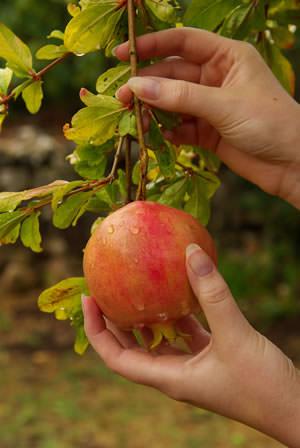

The pomegranate tree is not very vulnerable when it comes to pests and diseases. It is mostly attacked by fruit flies, whiteflies and pomegranate butterflies.
Fruit crack is one problem that is common in all pomegranate varieties. It occurs due to fluctuation or lack of moisture in a substrate at the time of fruiting.
Harvesting
If pomegranate is grown from seeds fruits will begin to form in the third year.
Generally, the fruit will ripen in three to six months after the appearance of flowers.
Harvest pomegranate when the crust of the fruit is intense red. Simply cut the fruit’s stem using sharp pruning shear or knife.
Pomegranate is one of the nicest fruit trees and perhaps the easiest to grow in pots because it has a shallow root system when compared to other fruit trees.


Pomegranate tree if grown under optimal conditions, live up to 200 years. It is native to the Middle East (Iran) and South Asia, Himalayan Northern India. It is a shrub or small tree that might grow up to 6 m (20 ft) but usually reduced to 2 m.
USDA Hardiness Zones: 9b – 11, *can be grown below zone 9 in containers
Difficulty: Easy
Soil pH: Neutral
(adsbygoogle = window.adsbygoogle || []).push({});
Other Names: Punic apple, Granatapfel, Granada, Grenade, Melograno, Melagrana, Anardana, Anar, Dadima, Fruit du, Pomme Grenade, Punica granatum, Roma, Shi Liu Gen Pi, and Shi Liu Pi
Appearance
The exotic container plant is adorned with five to eight centimeters long lance-shaped leaves that are shiny and bronze in color from the bud, which later turn green.
Pomegranate flowers are delicate, bell-shaped and show up in the wild bright red. Its flowers are up to 3 centimeters wide. Ornamental varieties can have flowers in pink, cream, and even white.
In addition to the decorative foliage and flowers, it is mainly the fruits that make the pomegranate tree so desirable. They are of the size of apples with a yellow-brown to a reddish-brown or pink or rich red hard shell. Inside, the fruit consists of countless tiny sacs that are transparent in color. They are juicy and have beautiful pink or red pulp and one hard seed in each, which is completely edible. Overall, the taste of pomegranate fruit is a sweet and juicy, and crunchy and little tart. Without a doubt, this is the best tasting fruit full of nutrients.
Also Read: How to Grow Indian Gooseberry ‘Amla Tree’
Dwarf Pomegranate VarietiesFruiting Varieties‘Nana’ – The most interesting variety among the pomegranates trees is the dwarf variety ‘Nana.’ It grows compact, floriferous and is considered robust and cold hardy. It grows in USDA Zones 7 to 11. As a container plant, it grows up to only about 1 m tall, forms orange to garnet red flowers that produce small fruits with viable seeds.‘Provence’ – When most of the pomegranate varieties are not much cold hardy, Provence is one you can look at. It can tolerate temperature down to 5 F (-15 C) and can be grown in cold climate.‘State fair’ – State fair is manageable variety for containers. It can get up to 1.5 m tall and grown in USDA Zones 7 to 11.Ornamental Varieties‘Flore Pleno’ – It’s a fruitless variety of pomegranate, the name translates as “double flower.” In summer, it produces countless beautiful orange-red flowers.Punica granatum ‘Madame Legrelle’ – A well-known ornamental variety. The special thing about this variety of pomegranate is its extraordinary, dense double flowers that come in shiny orange to salmon colors with a white border.
Note: Pomegranate is a manageable plant. You can also try large varieties.
Propagation and Growing Pomegranates in Containers
Pomegranate plants can be propagated by cuttings or by seeds in spring to summer when the temperature remains in the range of 68 F (20 C), but it is better to buy a 2-3 years old plant from nursery or online. This way you don’t have to wait long for fruits.
Propagation by Seeds
Buy as ripe pomegranate as possible. Separate and clean seeds from the pulp by rubbing them from paper towel, let them dry up for a few days before sowing.
Plant the seeds no more than ¼ inches deep in light seed-starting mix. Place the pots in a bright location, optionally inside a plastic bag or greenhouse that maintains a temperature around 68 F (20 C). Always keep the soil moist. Seeds will germinate within 1 – 6 weeks depending more on the variety and climate.
Propagation by Cuttings
Take several 8 to 10 inch-long cuttings. Plant the cutting in a well-drained potting mix. It roots easily and quickly at the ambient temperature of 20 degrees Celsius and high humidity.
*If you’re living in tropics, growing pomegranates is extremely easy for you. You can grow pomegranate in any season except peak summer. All other growing requirements given below are similar.
Choosing a pot
Pot should be appropriate to the size of the plant, increase the pot size by repotting as your plant grow. Also, care about to have sufficient holes in the base of pot you’re using for proper drainage.
Requirements for Growing Pomegranates in Pots


If you’ve grown citrus in a pot, growing pomegranates in a pot cannot be difficult for you. Moreover, pomegranate is more cold hardy and easy to grow. It requires a lot of water and fertilizer. It is also frost sensitive, but after all of this care, it rewards you with iron-rich, fresh juicy fruits.
Location
Choose the sunniest location to keep your pomegranate plant happy and healthy. The more sun it will receive, the more it will fruit. However, it also thrives in partial shade, but it makes the plant to bloom and fruit lesser. It is also possible to cultivate pomegranate tree near a windowsill if it receives full sun.
Soil
Soil should be loamy, rich in organic content, loose and permeable.
Watering
In the growing period, its water requirement is medium to high. Therefore, it should be watered regularly and deeply. Soil must be kept moist but not wet or waterlogged.
In the winter watering should be reduced.Pomegranate Tree CareFertilizer
During the growing season, the pomegranate tree is fertilized regularly. Fertilize after every two-three weeks using liquid 8-8-8 fertilizer according to the manufacturer’s instructions.
Pomegranate tree in pot often becomes zinc deficient, which is indicated by yellowing leaves. To overcome this, you can spray diluted zinc solution on foliage.
Application of compost or manure is also beneficial. Take care not to overfertilize it with nitrogen-rich fertilizer as it can cause the tree to produce lots of foliage and comparatively fewer flowers.
Overwintering Pomegranate
Overwintering pomegranate is similar to citrus. It is a deciduous tree that worships the sun. Most of its species are sensitive to frost. But for too low temperatures, the plant has developed a protective mechanism.
It sheds its leaves and become dormant below freezing temperature. There are only a few pomegranate tree varieties that survive really freezing temperatures with more than -10 C without damage.
If the pomegranate is cultivated in a pot in a cold climate below USDA Zone 9, it is important to prune it in the fall. The best place to keep pomegranate plant in winter is the garage or basement that remains warm. Temperature while keeping it indoors should not fall below 37 F (3 C). However, the optimum low temperature for most of the pomegranate varieties is 7 C (45 F).
If you’re able to keep your pomegranate tree in temperature around 55 F (15 C) indoors and allow it to take at least 4 hours of sunlight, it will not shed its leaves and go dormant. During the period of dormancy, the pomegranate hardly needs fertilizer or water. However, the plant in winter should not dry out completely.
In spring, bring back the plant to a warm and bright place so that it’ll gradually acclimate the climate. A window that is oriented to South is good. Just when the plant shows the first sign of growth and forms a few fully developed leaves, you can again start to fertilize it and give more water. Once the temperature comes in a range of 7 C (45 F) place it outside.
Pruning
Pruning is necessary to give and maintain the desired shape of your pomegranate tree and encourage flowering and fruiting. It is best done after all danger of frost has passed when the tree is about to start growing. Between early to mid spring.
Prune off weak, dead and undesirable branches to direct shrub’s energy to right parts and shorten long branches to encourage flowering.
Caveat: Some of the varieties have thorns, wear gloves before pruning for your safety.
Repotting
Repot your pomegranate tree when it becomes slightly root bound. The right time to repot is when there are no flowers or fruits on the plant, especially when it starts its growth at the beginning of growing season.
Diseases, Pests, and other Problems


The pomegranate tree is not very vulnerable when it comes to pests and diseases. It is mostly attacked by fruit flies, whiteflies and pomegranate butterflies.
Fruit crack is one problem that is common in all pomegranate varieties. It occurs due to fluctuation or lack of moisture in a substrate at the time of fruiting.
Harvesting
If pomegranate is grown from seeds fruits will begin to form in the third year.
Generally, the fruit will ripen in three to six months after the appearance of flowers.
Harvest pomegranate when the crust of the fruit is intense red. Simply cut the fruit’s stem using sharp pruning shear or knife.
0
0
文章
Andy
2018年12月26日

Facebook Pinterest Twitter Google+ LinkedIn StumbleUponLearn How to Grow Fenugreek in your garden or containers in your balcony. Growing fenugreek is easy. This quick growing vegetable is full of nutrients. 

Fenugreek or ‘Methi’ is native to Southwest Asia and widely cultivated for its medicinal and culinary uses. It’s an all purpose plant. Seeds are used as a spice, dried leaves as a herb, and fresh and tender leaves as a green leafy vegetable. It tastes little sweet with a touch of bitterness like mustard greens or bok choy. It can be a healthy alternative of spinach and any other greens.
USDA ZONES: All the zones as a seasonal crop
Difficulty: Easy
Growing Season: Spring, summer, and fall (year-round in warm climates, i.e., USDA Zone 9-11)
Other Names: Trigonella foenum-graecum (Scientific Name), Methi, Samudra methi, Shanbalile, Abesh, Hilbeh, Hilba, Helba, Halba, Kasturi methi
Growing fenugreek is easy, whether you live in a warm climate or cool, both on grounds or in containers. You can also grow it indoors on windowsills in small pots. You can also plant it in your balcony vegetable garden or patio, terrace, and rooftop with lettuce, spinach, and other greens.
How to Grow Fenugreek
Create a fenugreek bed with cilantro or grow it alone. You can cultivate it from seeds. It’s easy even for beginners.
Sow seeds ¼ inches deep in a good potting mix or soil in the desired spot or container when all the dangers of frost are passed, and the weather starts to warm up (for cool climate).
Remember, fenugreek hates to be transplanted. Leave 2 inches of space for each plant while sowing seeds. They’ll sprout quickly, and you’ll see seedlings just within 2-5 days.
Note: Buy best quality seeds from the garden center or online. You can also buy it from grocery stores or spice shops as its seeds are sold as a spice but beware of poor germination rate.
You can directly sow seeds but if you’ve bought them from grocery stores, soak them overnight to increase germination rate before planting.Growing Fenugreek in Containers


You can grow fenugreek in containers. It’s similar to any other green vegetable. Take a shallow but wide planter at least 6-8 inches deep with good drainage. Fenugreek has shallow roots so it won’t mind the low depth.
Fill the pot with rich potting mix. You can mix a 1/3 part compost or well-rotted cow or horse manure to it. Sprinkle seeds all over the pot and dust a thin quarter inch layer of soil briskly to cover them. Leave 1-2 inch of spacing between seeds. Don’t care about the spacing of seeds if you’re growing fenugreek as a microgreen.
Also Read: Best Microgreens You Should Grow
Growing Climate and TemperatureFenugreek grows well in a warm and hot climate when the temperature ranges from 50 to 90 F (10 C to 32 C).When planting it for seeds, grow it in spring or early summer. If you’re cultivating it to use as a vegetable or herb, then you can plant it anytime between spring to mid-fall.If you live in zone 9-11 or any warm place with frost-free winters outside the U.S., grow fenugreek year round.
Also Read: Best Basil Varieties for your Kitchen
Fenugreek Plant Care and RequirementsLocation
Fenugreek prefers neutral to slightly alkaline soil with pH level around 6.5-8.2. Plant it in a spot that receives at least 4-5 hours of direct sun with shade in the afternoon. Prefer a sunny spot if you’re growing it in a climate where is not intense and the weather is cold.
Watering
Do regular watering to keep the soil slightly moist. Care not to over-water the fenugreek plant and avoid waterlogged soil. This will impede the growth and kill your plant. If you’re growing fenugreek indoors or in a shady area, be vigilant about watering.
Fertilizer
Fenugreek does not require a lot of fertilizer. At the time of planting, you can mix manure or compost or time-based fertilizer in the soil, and that will keep it growing for a few weeks. Also, feed the plant with balanced liquid fertilizer, every other week for more robust growth.
Pests and Diseases
Fenugreek does not have many pests and diseases. Some pests and diseases that affect it are aphids, powdery mildew, charcoal rot, and root rot. You can easily save your plant from these problems by using organic pesticides regularly and watering properly.
Harvesting Fenugreek
In favorable conditions, within 20-30 days fenugreek will be ready for the first harvest. Trim the leaves gently to use as a leafy vegetable and prepare delicious recipes or air dry it to use as a herb. Leave the twigs, which will grow up again in 15 days. You can do this up to four times. To harvest fenugreek seeds, you will have to wait for 2-4 months, depending on the growing conditions.
It’s hot aroma like pepper and crunchy sour and sweet flavor gives it a distinctive taste, which you can’t compare with other vegetables. It is popularly used in Indian, Persian, Egyptian and Ethiopian cuisines, to prepare tastiest recipes. Fresh seeds are used to sprinkle on salad and dried seeds in pickles.


Fenugreek or ‘Methi’ is native to Southwest Asia and widely cultivated for its medicinal and culinary uses. It’s an all purpose plant. Seeds are used as a spice, dried leaves as a herb, and fresh and tender leaves as a green leafy vegetable. It tastes little sweet with a touch of bitterness like mustard greens or bok choy. It can be a healthy alternative of spinach and any other greens.
USDA ZONES: All the zones as a seasonal crop
Difficulty: Easy
Growing Season: Spring, summer, and fall (year-round in warm climates, i.e., USDA Zone 9-11)
Other Names: Trigonella foenum-graecum (Scientific Name), Methi, Samudra methi, Shanbalile, Abesh, Hilbeh, Hilba, Helba, Halba, Kasturi methi
Growing fenugreek is easy, whether you live in a warm climate or cool, both on grounds or in containers. You can also grow it indoors on windowsills in small pots. You can also plant it in your balcony vegetable garden or patio, terrace, and rooftop with lettuce, spinach, and other greens.
How to Grow Fenugreek
Create a fenugreek bed with cilantro or grow it alone. You can cultivate it from seeds. It’s easy even for beginners.
Sow seeds ¼ inches deep in a good potting mix or soil in the desired spot or container when all the dangers of frost are passed, and the weather starts to warm up (for cool climate).
Remember, fenugreek hates to be transplanted. Leave 2 inches of space for each plant while sowing seeds. They’ll sprout quickly, and you’ll see seedlings just within 2-5 days.
Note: Buy best quality seeds from the garden center or online. You can also buy it from grocery stores or spice shops as its seeds are sold as a spice but beware of poor germination rate.
You can directly sow seeds but if you’ve bought them from grocery stores, soak them overnight to increase germination rate before planting.Growing Fenugreek in Containers


You can grow fenugreek in containers. It’s similar to any other green vegetable. Take a shallow but wide planter at least 6-8 inches deep with good drainage. Fenugreek has shallow roots so it won’t mind the low depth.
Fill the pot with rich potting mix. You can mix a 1/3 part compost or well-rotted cow or horse manure to it. Sprinkle seeds all over the pot and dust a thin quarter inch layer of soil briskly to cover them. Leave 1-2 inch of spacing between seeds. Don’t care about the spacing of seeds if you’re growing fenugreek as a microgreen.
Also Read: Best Microgreens You Should Grow
Growing Climate and TemperatureFenugreek grows well in a warm and hot climate when the temperature ranges from 50 to 90 F (10 C to 32 C).When planting it for seeds, grow it in spring or early summer. If you’re cultivating it to use as a vegetable or herb, then you can plant it anytime between spring to mid-fall.If you live in zone 9-11 or any warm place with frost-free winters outside the U.S., grow fenugreek year round.
Also Read: Best Basil Varieties for your Kitchen
Fenugreek Plant Care and RequirementsLocation
Fenugreek prefers neutral to slightly alkaline soil with pH level around 6.5-8.2. Plant it in a spot that receives at least 4-5 hours of direct sun with shade in the afternoon. Prefer a sunny spot if you’re growing it in a climate where is not intense and the weather is cold.
Watering
Do regular watering to keep the soil slightly moist. Care not to over-water the fenugreek plant and avoid waterlogged soil. This will impede the growth and kill your plant. If you’re growing fenugreek indoors or in a shady area, be vigilant about watering.
Fertilizer
Fenugreek does not require a lot of fertilizer. At the time of planting, you can mix manure or compost or time-based fertilizer in the soil, and that will keep it growing for a few weeks. Also, feed the plant with balanced liquid fertilizer, every other week for more robust growth.
Pests and Diseases
Fenugreek does not have many pests and diseases. Some pests and diseases that affect it are aphids, powdery mildew, charcoal rot, and root rot. You can easily save your plant from these problems by using organic pesticides regularly and watering properly.
Harvesting Fenugreek
In favorable conditions, within 20-30 days fenugreek will be ready for the first harvest. Trim the leaves gently to use as a leafy vegetable and prepare delicious recipes or air dry it to use as a herb. Leave the twigs, which will grow up again in 15 days. You can do this up to four times. To harvest fenugreek seeds, you will have to wait for 2-4 months, depending on the growing conditions.
It’s hot aroma like pepper and crunchy sour and sweet flavor gives it a distinctive taste, which you can’t compare with other vegetables. It is popularly used in Indian, Persian, Egyptian and Ethiopian cuisines, to prepare tastiest recipes. Fresh seeds are used to sprinkle on salad and dried seeds in pickles.
0
0
文章
Andy
2018年12月26日

Tangy and sour, lemon adds flavor to every cuisine. Learn how to grow a lemon tree in a pot. Growing lemon tree is easy if you follow the requirements given below.

Image credit: the tree center
You want to grow lemons but stop because you run out of space or you don’t grow it because you live in a colder region. If this is your plight then growing a lemon tree in a pot is a smart idea. Plant it on a patio, terrace or in indoors, and you will be bestowed by its scented flowers and soft yellow citrus fruits. You can grow it in balcony too, Meyer lemon variety is perfect for kitchen and balcony gardens, especially for non-tropical zones.
Lemon Tree Varieties
Growing lemon tree from seed is a bad idea because it can take up to 4 years to produce fruits. Instead, ask in local nurseries for dwarf varieties that can do well in containers. Varieties that are most suitable for containers are Improved Meyer, Lisbon Lemon, and Dwarf Eureka. However, a lemon tree doesn’t grow too big, which means you can grow almost any variety in the pot.
*Buy a healthy lemon plant that is at least 3 years old, so that you don’t have to wait for it to start blooming and fruiting.
How to Grow a Lemon Tree in Pot
Choose a pot that is 25% bigger than the root ball of the plant. A clay pot is ideal because unlike plastic it is porous and evaporates water from sides, this helps the lemon tree to grow well as it dislikes being waterlogged. The quality and type of potting soil is an essential factor as well. For growing high yielding plants, use well draining organic potting mix.
*If you’re growing a lemon tree in a balcony or any other small space, take care of its spikes, keep the plant in a corner.
Requirements for Growing Lemon Tree in a Pot
Repot your lemon tree in every couple of years or so at the beginning of spring (in warm climates, winter is the best season). Your pot size should be according to the scale of your tree. Avoid too large or small planters, keep in mind to use a container that is one size bigger than your previously used pot.
*pH level of soil should be around 5.5 to 7 as this plant prefers slightly acidic soil to neutral soil.
Sunlight
All plants in the citrus family love full sun, around 7 to 8 hours of sunlight is essential. If growing lemon tree indoors, use grow lights to provide adequate lighting inside.
Also Read: Growing Pomegranates in Containers
Watering
The lemon tree requires consistent watering to produce healthy fruits. Giving it too much or too little water can lead to blossom and fruit drop and sometimes plant may die too. Check top 2-inch layer of soil for dryness before watering. On windy and hot days, it requires more frequent watering and slightly moist soil.
Humidity
If you are growing a lemon tree indoors, it requires a certain humidity level to thrive, 50% is ideal. You can maintain humidity by placing it on a pebble tray or using a humidifier.
Lemon Tree Care
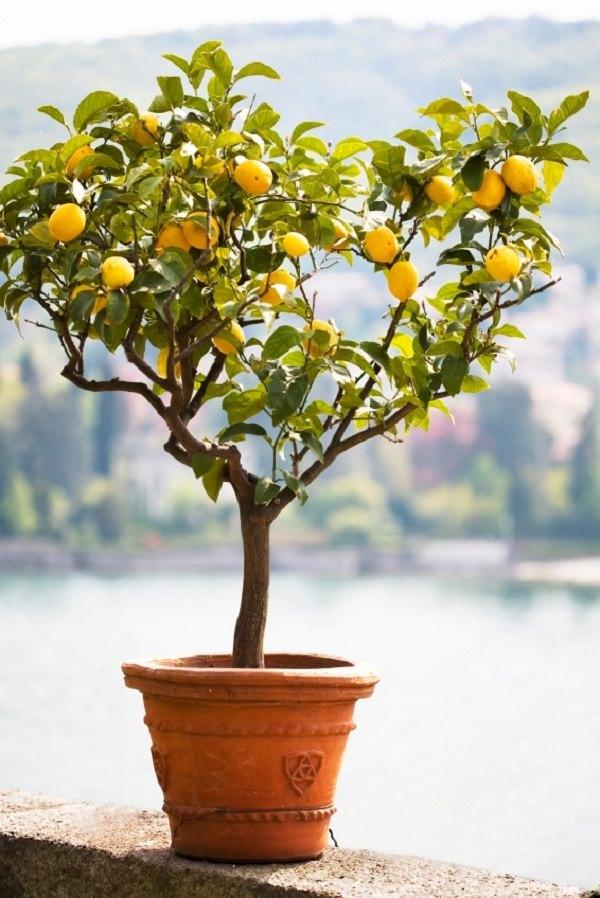

If you’re growing a lemon tree in a pot in USDA Zones 8b to 11, you don’t need to care for cold that much, but below these zones, special care is needed in harsh winters. Temperature below 30°F (-1 C) is life-threatening for the lemon tree, except ‘Meyer’ lemon variety that can tolerate some cold till 24°F (-4 C).
Freezing temperatures succumb these plants to death. Optimum temperature is around 50°F to 82°F (10°C to 28°C). To overwinter it, keep your potted plant indoors or in a greenhouse when the temperature falls below 35°F (2°C).
Pruning and Pinching Lemon Tree
Pinching encourages bushier growth, pinch growing tip when a branch is about 5 inches long. Pruning of lemon tree is best carried out when new growth starts (February – March). Be careful before pruning it, only prune diseased or dead branches because lemon stores excess food in its leaves and too much pruning can result in poor fruit crop. Also, keep looking for suckers and prune them immediately if found one.
Fertilizer for Growing Lemon Tree in a Pot
All plants of citrus family are heavy feeders, and lemon tree too requires fertilizer to produce juicy fruits, lush foliage, and fragrant blooms. Use special purpose citrus fertilizers for every citrus species plant, if unavailable use slow release fertilizer of NPK 12-6-6.
Look for a fertilizer that contains micronutrients, especially iron, manganese, and zinc. To give boost feed to your lemon tree apply a water-soluble fertilizer once in a month in growing season. Occasionally, side dress your plant with compost or well-rotted manure.
Pests and Diseases for Lemon Tree in Pot
Pests like mealy bugs, spider mites, aphids, and scales occasionally attract toward it. To get rid of them organically read this article.
Harvesting
Harvesting time depends on the type of variety you are growing and your weather conditions. The citrus fruits stop ripening once they are off the tree. To determine if the fruit is ripened, see if the fruit is heavy, soft and yellow.
Also Read: Growing Cucumbers on a Trellis
Additional Tips for Growing Lemon Tree in PotKeep your lemon tree in a less windy spot as it dislikes strong winds.If moving indoors for winter or outside for summer, acclimatize it to avoid shock.You can also do grafting to get two or more varieties from the single tree.


Image credit: the tree center
You want to grow lemons but stop because you run out of space or you don’t grow it because you live in a colder region. If this is your plight then growing a lemon tree in a pot is a smart idea. Plant it on a patio, terrace or in indoors, and you will be bestowed by its scented flowers and soft yellow citrus fruits. You can grow it in balcony too, Meyer lemon variety is perfect for kitchen and balcony gardens, especially for non-tropical zones.
Lemon Tree Varieties
Growing lemon tree from seed is a bad idea because it can take up to 4 years to produce fruits. Instead, ask in local nurseries for dwarf varieties that can do well in containers. Varieties that are most suitable for containers are Improved Meyer, Lisbon Lemon, and Dwarf Eureka. However, a lemon tree doesn’t grow too big, which means you can grow almost any variety in the pot.
*Buy a healthy lemon plant that is at least 3 years old, so that you don’t have to wait for it to start blooming and fruiting.
How to Grow a Lemon Tree in Pot
Choose a pot that is 25% bigger than the root ball of the plant. A clay pot is ideal because unlike plastic it is porous and evaporates water from sides, this helps the lemon tree to grow well as it dislikes being waterlogged. The quality and type of potting soil is an essential factor as well. For growing high yielding plants, use well draining organic potting mix.
*If you’re growing a lemon tree in a balcony or any other small space, take care of its spikes, keep the plant in a corner.
Requirements for Growing Lemon Tree in a Pot
Repot your lemon tree in every couple of years or so at the beginning of spring (in warm climates, winter is the best season). Your pot size should be according to the scale of your tree. Avoid too large or small planters, keep in mind to use a container that is one size bigger than your previously used pot.
*pH level of soil should be around 5.5 to 7 as this plant prefers slightly acidic soil to neutral soil.
Sunlight
All plants in the citrus family love full sun, around 7 to 8 hours of sunlight is essential. If growing lemon tree indoors, use grow lights to provide adequate lighting inside.
Also Read: Growing Pomegranates in Containers
Watering
The lemon tree requires consistent watering to produce healthy fruits. Giving it too much or too little water can lead to blossom and fruit drop and sometimes plant may die too. Check top 2-inch layer of soil for dryness before watering. On windy and hot days, it requires more frequent watering and slightly moist soil.
Humidity
If you are growing a lemon tree indoors, it requires a certain humidity level to thrive, 50% is ideal. You can maintain humidity by placing it on a pebble tray or using a humidifier.
Lemon Tree Care


If you’re growing a lemon tree in a pot in USDA Zones 8b to 11, you don’t need to care for cold that much, but below these zones, special care is needed in harsh winters. Temperature below 30°F (-1 C) is life-threatening for the lemon tree, except ‘Meyer’ lemon variety that can tolerate some cold till 24°F (-4 C).
Freezing temperatures succumb these plants to death. Optimum temperature is around 50°F to 82°F (10°C to 28°C). To overwinter it, keep your potted plant indoors or in a greenhouse when the temperature falls below 35°F (2°C).
Pruning and Pinching Lemon Tree
Pinching encourages bushier growth, pinch growing tip when a branch is about 5 inches long. Pruning of lemon tree is best carried out when new growth starts (February – March). Be careful before pruning it, only prune diseased or dead branches because lemon stores excess food in its leaves and too much pruning can result in poor fruit crop. Also, keep looking for suckers and prune them immediately if found one.
Fertilizer for Growing Lemon Tree in a Pot
All plants of citrus family are heavy feeders, and lemon tree too requires fertilizer to produce juicy fruits, lush foliage, and fragrant blooms. Use special purpose citrus fertilizers for every citrus species plant, if unavailable use slow release fertilizer of NPK 12-6-6.
Look for a fertilizer that contains micronutrients, especially iron, manganese, and zinc. To give boost feed to your lemon tree apply a water-soluble fertilizer once in a month in growing season. Occasionally, side dress your plant with compost or well-rotted manure.
Pests and Diseases for Lemon Tree in Pot
Pests like mealy bugs, spider mites, aphids, and scales occasionally attract toward it. To get rid of them organically read this article.
Harvesting
Harvesting time depends on the type of variety you are growing and your weather conditions. The citrus fruits stop ripening once they are off the tree. To determine if the fruit is ripened, see if the fruit is heavy, soft and yellow.
Also Read: Growing Cucumbers on a Trellis
Additional Tips for Growing Lemon Tree in PotKeep your lemon tree in a less windy spot as it dislikes strong winds.If moving indoors for winter or outside for summer, acclimatize it to avoid shock.You can also do grafting to get two or more varieties from the single tree.
0
0
文章
Andy
2018年12月26日

Facebook Pinterest Twitter Google+ LinkedIn StumbleUponLearn how to grow feijoa in this article. If you live in a mild temperate or warm subtropical climate, growing feijoa (Pineapple Guava) will be really easy for you.
USDA Zones— 8 to 11
Difficulty— Easy
Soil pH— Slightly acidic to slightly neutral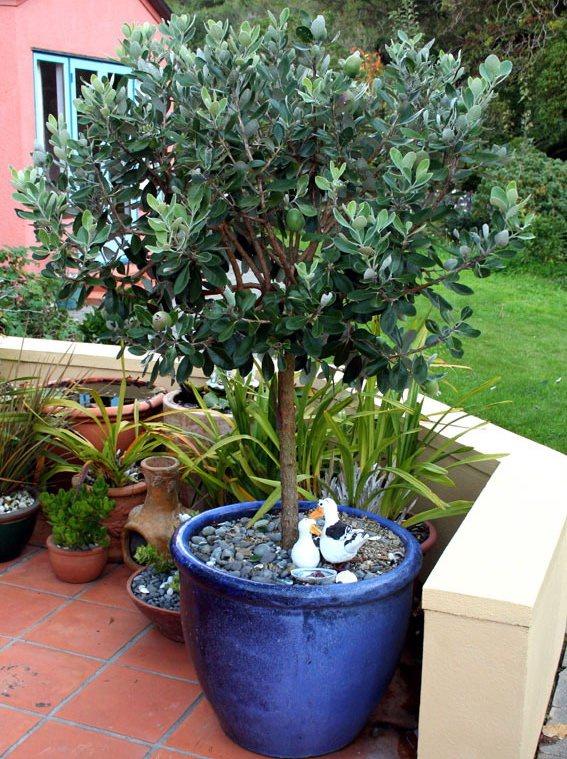

Feijoa or pineapple guava is a large and attractive evergreen shrub that is native of South America. It belongs to the myrtle family (Myrtaceae) and is widely known with the name of guaiabo, pineapple guava, guavasteen. However, it is not real guava and generally grown for its ornamental values and sweet, aromatic fruits that taste like a combination of guava, pineapple, and mint.
Growing Habit of Feijoa
If you’re growing pineapple guava, you should know it is a slow growing shrub that can grow up to 5.5 meters (18 feet). Its edible and mildly fragrant white flowers bloom in summer. Fruits mature in 5-6 months after the flowers.
These fruits have the shape of an oval, similar to chicken egg and they look like guavas with a combined flavor of pineapple, guava, and mint.
Feijoa lives long between 50 to 70 years. Despite its subtropical origin, it is resistant to some freezing temperature, although below 12 ° F (-11 ° C) the plant suffers.
How to Plant Pineapple GuavaPlant the shrub in slightly acidic soil that is rich and well drained. Pineapple guava can grow in a variety of soil types, but the plant does best in slightly acidic soil.Dig a hole that is twice in depth and width of the previous pot in which you’ve bought the plant from the nursery.Mix one part of soil with one part of compost and peat.Remove the plant from the container, loose the root ball and place the plant in the hole. Plant the plant in the depth of or slightly higher than it was planted in its previous pot.Pour the soil into the hole and gently pat the soil over the roots and around the plant.Water the growing medium around the plant carefully so that air bubbles are removed and the soil settles.Growing Feijoa in Pot
If you live below USDA Zone 8 or in a more cooler climate, growing feijoa in the pot is the best option. All the growing requirements and caring tips are similar as we’ve recommended for planting on the ground.
Also Read: How to Grow Dragon Fruit
Requirements for Growing FeijoaLocation
Make sure your plant is exposed to full sun, at least 6 hours. Grow other plants around it, to shade the base of your tree. It is resistant to some cold, drought and heat but it doesn’t grow well in a windy spot so don’t hesitate to plant it near a wall to protect it.
Soil
It prefers sandy soil that is rich in organic matter–loose, light and gritty. Soil should be well-drained but not too dry. While planting, add some perlite or sand in your garden soil.
Fertilization
Feijoas grow slowly and require the application of 8-8-8 NPK organic fertilizer once every two months to speed up growth. The fertilizer you use should contain trace elements like copper, boron, magnesium, zinc, manganese, iron, and molybdenum.
Watering
Water the plant frequently, especially during the plant’s first year of growth. Established and mature plants are drought-tolerant. Still, the plant should receive an inch of water every week. Water clayey soil once a week and light soil twice a week on the ground. Reduce the amount of watering in winter and rainy season.
Pineapple Guava CarePruning
It is not necessary to prune feijoa, except if you want to give it a shape that suits you. You can prune your tree only at the time when there are no fruits hanging on the plant. In fall when the harvest is done, it’s an excellent time to prune it.
Mulching
Do mulching at the base of your tree with organic matters like straws, grass clippings, and twigs. You can also use coffee grounds. Mulching conserves the moisture content in soil, prevent weeds and insulate the plant in winter.
USDA Zones— 8 to 11
Difficulty— Easy
Soil pH— Slightly acidic to slightly neutral


Feijoa or pineapple guava is a large and attractive evergreen shrub that is native of South America. It belongs to the myrtle family (Myrtaceae) and is widely known with the name of guaiabo, pineapple guava, guavasteen. However, it is not real guava and generally grown for its ornamental values and sweet, aromatic fruits that taste like a combination of guava, pineapple, and mint.
Growing Habit of Feijoa
If you’re growing pineapple guava, you should know it is a slow growing shrub that can grow up to 5.5 meters (18 feet). Its edible and mildly fragrant white flowers bloom in summer. Fruits mature in 5-6 months after the flowers.
These fruits have the shape of an oval, similar to chicken egg and they look like guavas with a combined flavor of pineapple, guava, and mint.
Feijoa lives long between 50 to 70 years. Despite its subtropical origin, it is resistant to some freezing temperature, although below 12 ° F (-11 ° C) the plant suffers.
How to Plant Pineapple GuavaPlant the shrub in slightly acidic soil that is rich and well drained. Pineapple guava can grow in a variety of soil types, but the plant does best in slightly acidic soil.Dig a hole that is twice in depth and width of the previous pot in which you’ve bought the plant from the nursery.Mix one part of soil with one part of compost and peat.Remove the plant from the container, loose the root ball and place the plant in the hole. Plant the plant in the depth of or slightly higher than it was planted in its previous pot.Pour the soil into the hole and gently pat the soil over the roots and around the plant.Water the growing medium around the plant carefully so that air bubbles are removed and the soil settles.Growing Feijoa in Pot
If you live below USDA Zone 8 or in a more cooler climate, growing feijoa in the pot is the best option. All the growing requirements and caring tips are similar as we’ve recommended for planting on the ground.
Also Read: How to Grow Dragon Fruit
Requirements for Growing FeijoaLocation
Make sure your plant is exposed to full sun, at least 6 hours. Grow other plants around it, to shade the base of your tree. It is resistant to some cold, drought and heat but it doesn’t grow well in a windy spot so don’t hesitate to plant it near a wall to protect it.
Soil
It prefers sandy soil that is rich in organic matter–loose, light and gritty. Soil should be well-drained but not too dry. While planting, add some perlite or sand in your garden soil.
Fertilization
Feijoas grow slowly and require the application of 8-8-8 NPK organic fertilizer once every two months to speed up growth. The fertilizer you use should contain trace elements like copper, boron, magnesium, zinc, manganese, iron, and molybdenum.
Watering
Water the plant frequently, especially during the plant’s first year of growth. Established and mature plants are drought-tolerant. Still, the plant should receive an inch of water every week. Water clayey soil once a week and light soil twice a week on the ground. Reduce the amount of watering in winter and rainy season.
Pineapple Guava CarePruning
It is not necessary to prune feijoa, except if you want to give it a shape that suits you. You can prune your tree only at the time when there are no fruits hanging on the plant. In fall when the harvest is done, it’s an excellent time to prune it.
Mulching
Do mulching at the base of your tree with organic matters like straws, grass clippings, and twigs. You can also use coffee grounds. Mulching conserves the moisture content in soil, prevent weeds and insulate the plant in winter.
0
0




